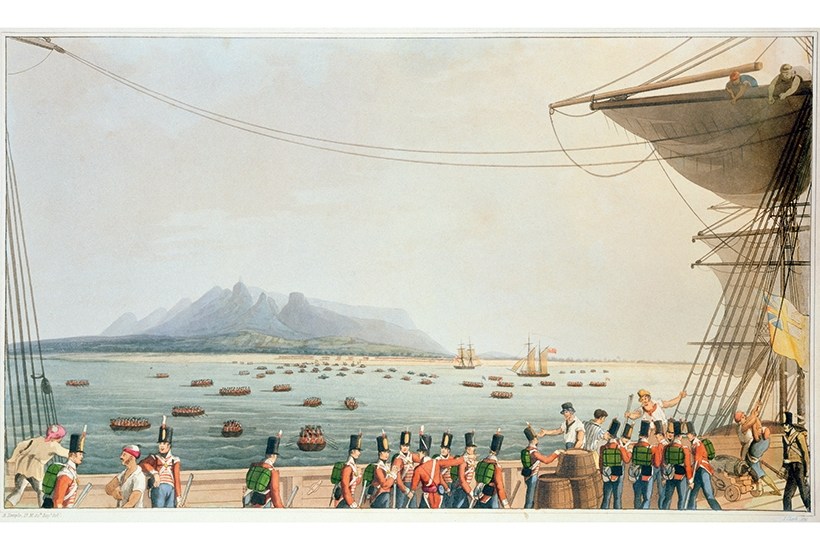In 1798, Tipu Sultan of Mysore sent an embassy to Mauritius. At home, he had fought the British and seen his kingdom shrink. Now he hoped to recruit Mauritian republicans in a joint fight. Mauritius had been a base for French troops attacking the British in India in the 1780s. In return for their help, Tipu promised to supply any Frenchman with provisions, except wine. And he pledged to kill every British soldier in India.
Tipu’s mission is one of the many fascinating stories in this rich and stimulating new history of the world between the late 18th and the mid 19th centuries. Normally it is the French Revolution of 1789 and European revolutions of 1848 that provide the cornerstones of this period. Historians in the past used the lens of ‘the Atlantic Revolution’ to look at these transformative years. From such a perspective, the American and the French Revolutions are at the centre of a radical dynamic that then spills over to other parts of the world.
Waves Across the Southturns this conventional wisdom upside down, and invites us to follow the making of the modern world from the Pacific instead. This is a maritime history of empire rather than one of land and territorial battles. At the centre are not London or Paris but the Pacific and Indian oceans. This book will take you on a voyage from the Cape Colony in southern Africa all the way to New Zealand, with important stopovers in Mauritius, the Persian Gulf, Ceylon, Java and New South Wales.
This is Big History. It tells the story of how the French Revolution set in motion a counter-revolution, which the British Empire used to expand and consolidate its power. But unlike a lot of macro histories, it does so by weaving together local drama and personal stories in a colourful canvas that lets us feel the texture of history in action.
Sujit Sivasundaram has no illusions about the power of the British Empire. At the same time, he shows how the process of establishing that power almost always relied on local knowledge, interests and collaborators. The book begins with Tuki and Huru, the first Maori kidnapped in 1793, and reproduces Tuki’s map to discuss British interest in local cartography and natural harbours. We meet Parsi ship builders, merchants, slave owners, indigenous warriors and lascars (Asian sailors).
The conflict between revolutionary and counter-revolutionary forces was not something decided in Europe that then simply spilled over to the rest of the world. ‘Indigenous’ groups played a role in the local drama between revolution and empire. Mauritius, on which these pages are especially fine, declared itself a republic for a brief period in the early 1790s. Hongi Hika, also known as the ‘Maori Napoleon’, arrived in London in 1820 and allegedly declared that if there ‘is only one king in England, there shall be only one king in New Zealand’. Local leaders would model themselves on British aristocratic and monarchical power in their own power battles.
Some readers may wish for a bit more background to developments in Britain itself. Still, the book’s central argument is that the shift to an empire of free trade cannot be understood as occurring on a political date fixed in Westminster but must be seen as an ongoing process of maritime conflict across the waves ruled by Britannia. In the 1950s, the historians Robinson and Gallagher questioned the widespread idea that the mid-Victorians were anti-imperialist and instead proposed that these years saw the ‘imperialism of free trade’. This book goes one step further and reclaims the 1790s to the 1840s as a foundational period in the history of the British Empire.
How did Britain manage to establish itself as the preeminent hegemon? In addition to winning over local collaborators and suppressing opponents, there were weapons, such as the howitzer, put to brutally effective use in the Opium War (1839–42). The Victorian historian J.R. Seeley famously said that the British seemed to have conquered half the world in ‘a fit of absence of mind’. But the Britons who people the pages of this book are very different characters.
One, for example, is John Goldingham, the astronomer, who went to Madras to perform pendulum-length experiments to establish the exact shape of the Earth — an activity that came with its own dangers, since the tectonic plates were meeting there and he and his expedition almost died in an earthquake in 1824. Science and information were crucial ingredients of the new type of power that the British Empire represented.
The book concludes with some reflections on the ‘tragedy’ that the imperial triumph over revolution meant for local players, who had their spheres of action increasingly circumscribed by the new imperial realities. It is unclear whether a revolutionary triumph would have necessarily been less tragic. As the author shows elsewhere in the book, some of the local revolts were pro-slavery, not against, and in Mauritius ‘revolution provided an opportunity for privateering, slaving and raiding’.
The preface of the book is dated March 2020 and one can only feel happy that Sivasundaram was able to pull in his impressive haul of sources from across the Pacific before the pandemic. If you happen to be bored with the home office and long for an intellectual journey, then you should go and ride these waves across the south and explore the making of the modern world.
Got something to add? Join the discussion and comment below.
Get 10 issues for just $10
Subscribe to The Spectator Australia today for the next 10 magazine issues, plus full online access, for just $10.
You might disagree with half of it, but you’ll enjoy reading all of it. Try your first month for free, then just $2 a week for the remainder of your first year.














Comments
Don't miss out
Join the conversation with other Spectator Australia readers. Subscribe to leave a comment.
SUBSCRIBEAlready a subscriber? Log in